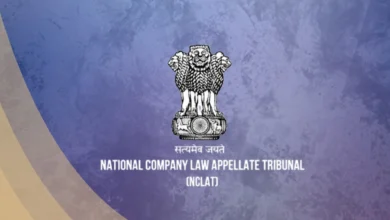Kerala High Court Rules Against Secured Creditor Pursuing SARFAESI Recovery Post Civil Suit Dismissal

| Get instant news updates: Click here to join our Whatsapp Group |
The Kerala High Court recently made a significant ruling regarding the Securitization and Reconstruction of Financial Assets and Enforcement of Security Interest (SARFAESI) Act. The court held that a secured creditor cannot proceed with recovery measures under the SARFAESI Act after filing a civil suit seeking recovery of dues, which subsequently got dismissed.
Background of the Case
In this particular case, the petitioner had availed a car loan of nine lakh rupees and had executed documents for security. The bank issued a notice to the petitioner under Section 13(2) of the SARFAESI Act for repayment of the loan amount. However, the petitioner contended that they had already paid the entire loan amount and no dues were pending. As a result, the petitioner filed a writ petition challenging the bank’s recovery proceedings.
Arguments Presented
The petitioner’s counsel argued that during the pendency of the writ petition, the bank had filed a commercial suit before the Commercial Court, Kottayam. The suit was subsequently dismissed, as it was found that there was no amount due to be recovered. Therefore, the counsel contended that the bank could not proceed with recovery proceedings under the SARFAESI Act since the suit had been dismissed.
On the other hand, the bank’s counsel argued that recovery measures under the SARFAESI Act and filing civil suits were separate and independent procedures. They claimed that as a secured creditor, the bank was entitled to initiate parallel proceedings for recovering dues. Additionally, they argued that the writ petition was not maintainable under Article 226 and that the petitioner should approach the Debt Recovery Tribunal under Section 17 of the SARFAESI Act.
Court’s Decision and Reasoning
The Kerala High Court referred to various judgments, including the Supreme Court’s decision in Authorized Officer, State Bank of Travancore v. Mathew K.C. (2018), which stated that a writ petition against measures taken by the bank under the SARFAESI Act was entertained only in exceptional circumstances. The court also mentioned the Supreme Court’s rulings in CIT v. Chhabil Das Agarwal (2016) and South Indian Bank Ltd. v. Naveen Mathew Philip (2023), which laid down four exceptional circumstances when a writ petition was maintainable against proceedings under the SARFAESI Act.
The court defined the term ‘debt’ as a liability inclusive of interest claimed from any person by the bank payable under a decree or order of any civil court or an arbitration award or otherwise or under a mortgage subsisted on and legally recoverable as of the date of application. In this case, since the civil suit filed by the bank was dismissed, the court concluded that there was no debt to be recovered by the creditor against the borrower under the SARFAESI Act.
The court held that the bank could not ignore the judgment of the civil court, which found that no amount was liable to be recovered. It deemed the bank’s actions as irrational and contrary to the statute for initiating recovery proceedings against the petitioner. The court further stated that since the bank had chosen to proceed with the civil suit and it was subsequently dismissed, the petitioner need not be relegated to approaching the Debt Recovery Tribunal as an alternative remedy under Section 17 of the SARFAESI Act. Therefore, the court held that the writ petition was maintainable and exercised its discretionary jurisdiction under Article 226 of the Constitution of India.
